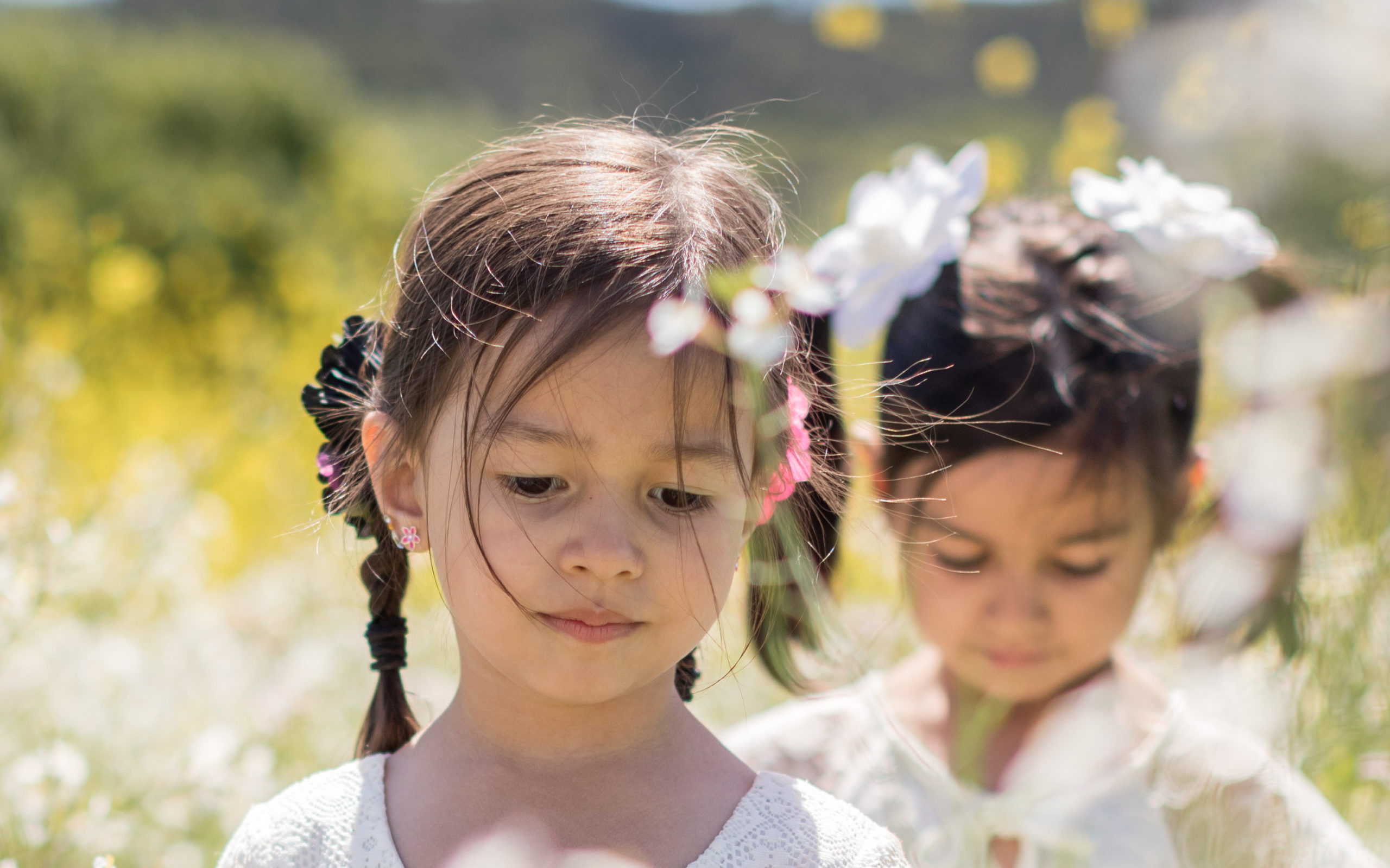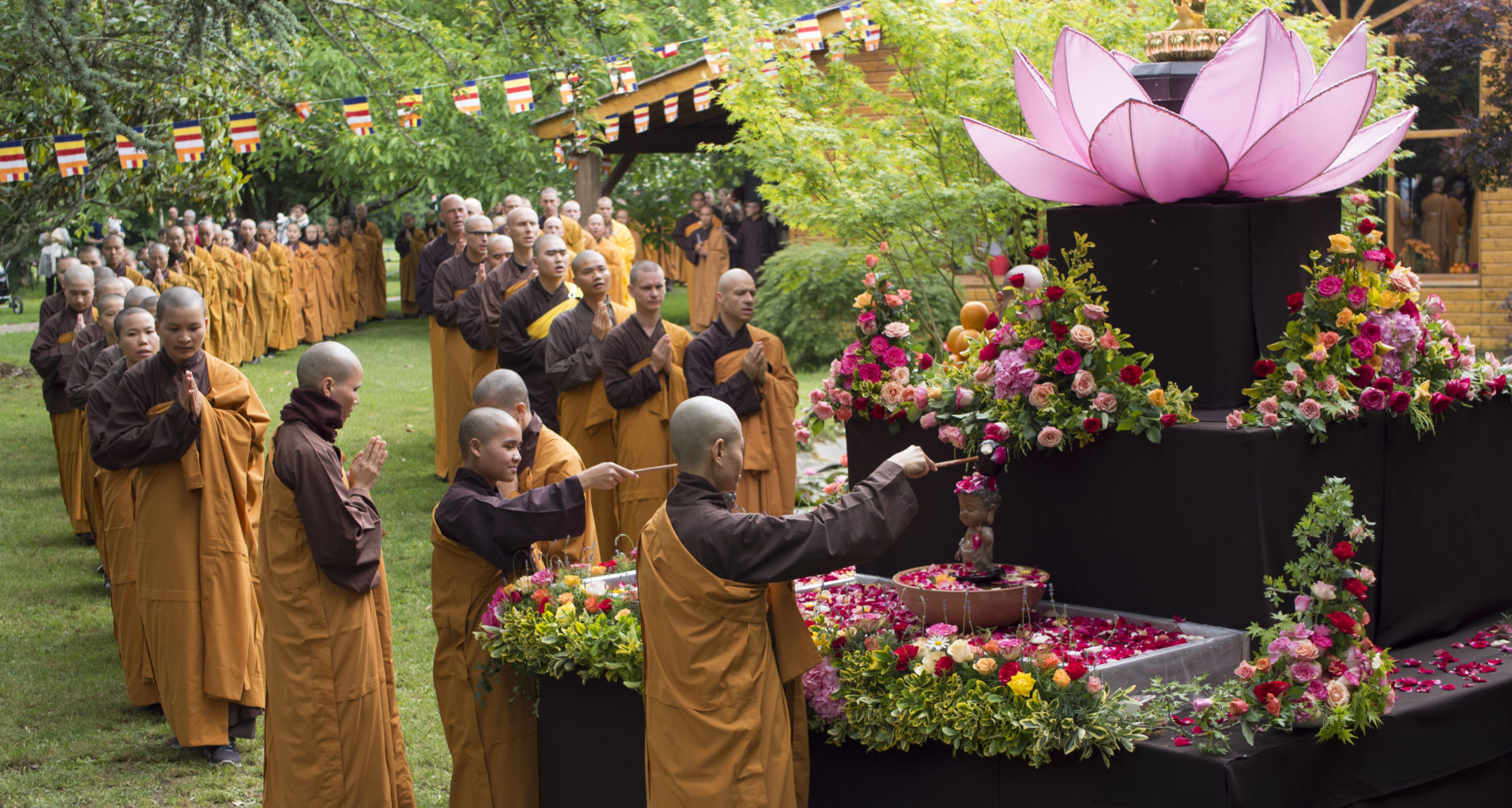By Allison Bekric

“Bring the kids, we love kids,” says my friend, May, who’s going.
May tries to convince me to take my three and four-year-old daughters, Amira and Alisa, to Sugar Plum Sangha in Ukiah for a tai chi and meditation retreat. It includes silent eating, silent walking, and silent space for individual reflection. Downstairs I hear a crash, and one of my kids screams.
By Allison Bekric

“Bring the kids, we love kids,” says my friend, May, who’s going.
May tries to convince me to take my three and four-year-old daughters, Amira and Alisa, to Sugar Plum Sangha in Ukiah for a tai chi and meditation retreat. It includes silent eating, silent walking, and silent space for individual reflection. Downstairs I hear a crash, and one of my kids screams.
“Okay. If you say so,” I agree and hang up.
The next morning, I stuff Hello Kitty pillows into the trunk of my car. My kids race around the lawn and practice the tumbling they learned in gymnastics class. I congratulate myself on remembering to pack all our toothbrushes and study the directions to the retreat. It’s two and a half hours from my house in San Jose, and the last thirty miles are on a one-lane dirt road through the mountains. In case we get lost or wrecked somewhere, I text my friend Ly so that someone will know where we are.
“Did you pack snacks for the kids,” she texts back, “And toys?”
“Who needs special snacks and toys when you have vegetarian cuisine and the wonders of nature?”
My kids fall asleep in their car seats after eating fast food, as Toddler Radio plays on Pandora. We arrive at the retreat in the late afternoon and set up our stuff in the cabin.
“Wow!” My kids shout. They are deliriously happy to see bunk beds. They spend the next thirty minutes in motion. They climb up and down the ladders, peer over the top bunk’s railing, and launch their Hello Kitty pillows to the ground below. Eventually, other people trickle in and claim their bunks. I tell the kids to settle down. I worry that someone will complain about the meditation retreat being invaded by toddlers.
Instead, a woman says, “You’re such a good mother for bringing your children.”
I feel my anxiety subside. “Thanks,” I reply. “I was worried people would be upset. I figure, if the kids get really loud, I’ll just take them home.”
“No, it’s fine. We love kids,” she says. A moment later, a Hello Kitty pillow hits her in the back of the head.
We’re having lentil curry, rice, and pineapple for dinner. It’s really good. My kids eat the rice and pineapple, and refuse to touch the curry. Dinner is supposed to be silent, but in spite of my repeated shushings, my kids keep talking. Finally, I tell them to whisper, which they do. I look around and can’t believe that no one is giving us dirty looks.
After dinner, we meet in the yurt to do meditation and tai chi. The fireplace casts a warm glow and fills the yurt with a cozy wood-burning smell. Amira and Alisa wrestle on the floor. I sit between them as a barrier. Alisa sits quietly in my lap when meditation begins. Amira builds a tower out of the meditation cushions.
Soon it’s bedtime. This is the time of day I dread the most. When we’re at home, the TV blares in the background as we argue over what kind of cookies to have with milk. I stuff four squirming arms and four squirming legs into matching Dora the Explorer pajamas. I admit, because I dread it so much, I delay bedtime until 9:30 p.m. By that time the kids are practically climbing the walls and foaming at the mouth with crankiness. We return to the cabin, and Amira and Alisa immediately dart over to the bunk beds again. They scramble up the ladder to hurl things over the edge. It’s around 9:00 p.m.
“I’m surprised your kids aren’t tired,” one woman says. “It’s probably way past their bedtime.”
“Yeah. I wonder why,” I repeat, feeling guilty. “I guess it’s because they slept in the car.”
I pick up Amira, who is dangling from the guardrail, using her legs to swing back and forth like a pendulum. It’s nice to see their gymnastics lessons haven’t gone to waste.
I put Amira into pajamas and brush her teeth, and then get Alisa ready. There’s no TV, so there’s no argument about turning it off. There are no toys to put away. We listen to an owl hooting outside. Then we bundle into our sleeping bags. I share a sleeping bag with Amira on the bottom bunk and Alisa’s on the top bunk by herself, and its lights are out. The kids fall asleep without a peep.
We wake up to the bell ringing at 6 a.m. for meditation. The kids spring into action. At home, I wake up at 5.30 a.m., while the kids wake up at 7:30 a.m. I suppose since they went to bed early last night they’re well-rested and ready to go. I get us all dressed and we head to the yurt.
The kids wrestle, and I separate them once again. When I close my eyes to mediate, Amira wonders over to play with the rocks and pictures displayed on the yurt’s altar. I gently steer her back to the circle and seat her in my lap. Alisa is already sitting on her cushion cross-legged. We become quiet.
After meditation, we all go outside for tai chi and find there’s an old swing set. May says that Sugar Plum Sangha used to be a school back in the 1970s, and some of the old school equipment is still around. She kindly takes Amria and Alisa to the swings. During tai chi, I learn something called “Taming the Dragon.”
For the rest of the retreat we sing songs, eat while whispering, walk in the mountains, and tell stories before bed. I feared huge melt-downs, drama, and time-outs, but found that the kids became calmer as the retreat progressed. It’s not like I said, “Here’s how to meditate,” or “Here’s how to be mindful.” Simply being in nature, not rushing, and being around adults practicing mindfulness taught them what to do.
Come to think of it, maybe children are naturally mindful. I remember Amira and Alisa saying, “Wow!” over and over again. “Wow” to the mountains, “Wow” to the bunk beds, “Wow” to the little treasures on the yurt’s altar. I wonder: When was the last time I said “Wow” to anything?
Before this trip, I wasn’t sure if meditation would mesh well with my small children. I thought that I’d rather do it on my own. I learned that I gain nourishment from other people’s presence in Sangha. Moreover, sitting with my child in my lap or near me is also replenishing. It’s teaching the mother in me to “be calm, it’s okay, you’re doing good job.” The fact that I am simply there with my children is enough.
My kids and I really enjoyed our time at Sugar Plum Sangha and have gone back twice so far. As I leave each time, I always leave grateful for everyone’s patience and understanding. When my kids say “Wow,” I’m now able to hear them. Sugar Plum Sangha provided me with an avenue to merge my practice with my real life.

Allison Bekric, Ancestral Healing of the Heart, is a nurse living in San Jose, California, with her two daughters. She has been practicing in the Thich Nhat Hanh tradition since her youngest daughter was born in 2014.

